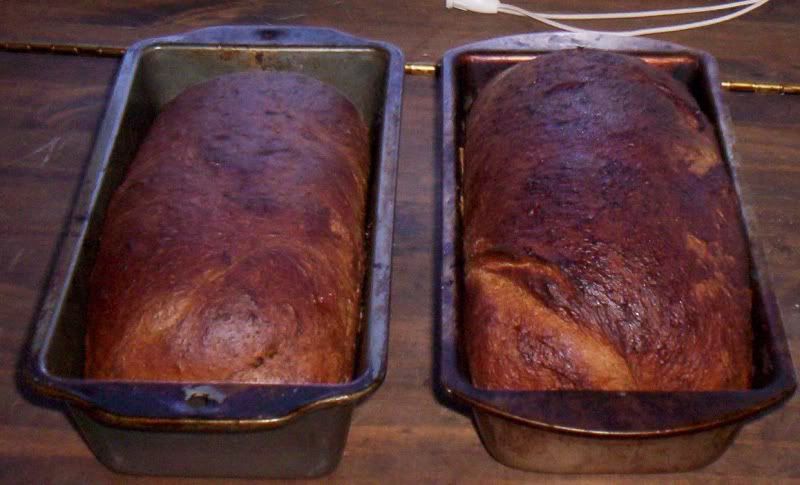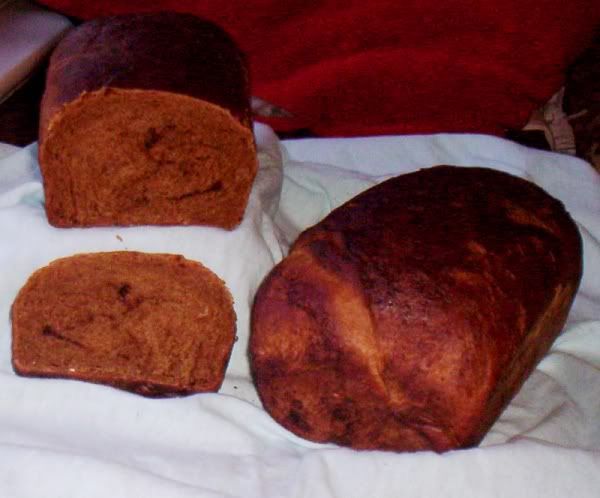So it's fitting that I chose a bread recipe from "Dairy Hollow House Soup and Bread" book: "Rabbit Hill Inn Oatmeal-Molasses Bread". We seem to be on a molasses kick at our house.

I went a little overboard on the blackstrap molasses, since there were only a few tablespoons left in the bottle and I love the taste. The loaf on the left has that extra molasses kneaded into the dough, and the one on the right just has the molasses smeared on top. (What's the effect of molasses as a glaze? Let's find out!) I also added vital wheat gluten, as I've taken to doing for my bread. If it's added any lift or shelf life, I wouldn't know because I haven't done a non-additive control.
My right wrist is bothersome, so I left the majority of the kneading up to the stand mixer and dough hook. It's a pretty sticky dough anyway.
I baked them at 375F for 30-odd minutes, spritzing with water generously and turning halfway through, then pulled them out when their internal temp was 210F. So what effect does a molasses glaze have on a bread? The crust is darker by a good lot, but there aren't other differences that I can tell.
They took forever to cool, but are deliciously worth the wait! They're sweet--thanks to the molasses--and like a sandwich bread in texture. The oatmeal didn't survive to lend anything to the texture, except perhaps to make it moister. I love how the molasses is swirled into the kneaded-in dough. It's almost like a cinnamon loaf.











